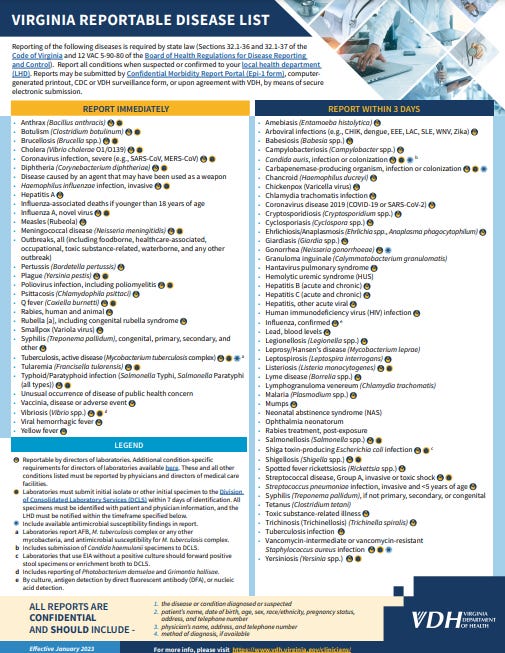Today marks the end of 2023 medical laboratory professionals week. This celebration encompasses multiple professions and settings, including public health, hospital, and commercial laboratory professionals with expertise in disciplines ranging from molecular biology to pathology to chemistry. These labs provide a backbone for both the medical care system where millions of treatment decisions are made every day based on lab results, as well as the public health system where advanced laboratory techniques are used for everything from identifying rare diseases such as Dengue Fever to using next-generation sequencing technology to link cases of foodborne illnesses like Salmonella, allowing identification and recall of contaminated foods.
Unlike doctors and nurses who are seen by patients and form relationships with patients over time, laboratory scientists are often quite literally hidden away in the hospital or clinic basement. In the public health world, it is often the epidemiologists who work directly with the public, and presenting the interesting outbreak stories at conferences and events. Even in a public health system where there is a good relationship between the laboratory and epidemiologists, it’s difficult for those outside the laboratory to truly understand the breadth of work they do, the dedication to getting accurate results out, and the creative scientific work that goes into each and every new test.
This topic is near to my heart for multiple reasons, one being that my mother-in-law has worked as a Medical Laboratory Scientist for over 40 years. We have had many wonderful dinner table conversations where she talks about the coolest plates of bacteria she saw that day, and I talk about my foodborne outbreak investigations. Meanwhile the rest of our family tries to tune us out and remind us that not everything thinks these are perfectly reasonable mealtime discussions. The second reason is that I had the incredible privilege of spending a year and a half working in one of the premier public health labs in the US, Virginia’s Division of Consolidated Laboratory Services (DCLS). I learned so much in that time about the dedication of the lab scientists, their depth of their scientific knowledge, and their public health commitment.
In addition to their role in the medical system, clinical and hospital laboratories are also critical members of the public health system. Each state puts forward a list of pathogens that clinical laboratories are required to forward isolates or specimens to the public health lab for further characterization. This requires laboratorians to recognize which pathogens need to be sent, follow the instructions for specimen or media type, and properly package and submit the specimens. Though this is a routine part of their work, each one of these specimens is used by public health for critical work such as monitoring circulating pathogens and identifying clusters and outbreaks. The journey of solving a nationwide foodborne outbreak doesn’t start in a top-level federal laboratory, it starts with a medical laboratory scientist identifying the pathogen and taking the time to submit the pathogen to the public health lab where it can be sequenced and compared against other recent illnesses.

Next time you get a lab result back from a medical test or you hear about an outbreak investigation, take a moment to appreciate those behind the lab coats working to get those results out the door. Happy lab week to all!






